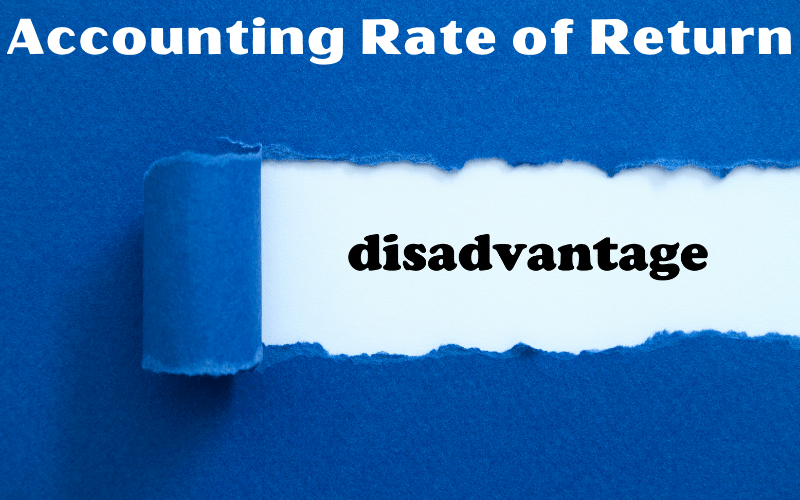Table of Contents
Disadvantages of Accounting Rate of Return
The accounting rate of return (ARR) measures profits earned by a company. It is easy to calculate and can be used to determine a company’s net earnings. However, it has some disadvantages.
For one thing, it doesn’t consider the cash inflows that the company needs to operate. Additionally, it doesn’t consider the period that profits were earned. For example, a 20% rate of return over ten years might be better than an 18% rate over six years. In addition, the longer the project, the higher the risk associated with it.
Time Value of Money
The accounting rate of return (ARR) measures an investment’s profitability by comparing the expected profits to the amount invested. This method is simple. However, it ignores important factors like the time value of money and long-term investment risk. This factor is crucial to business decision-making. In addition, ARR does not consider the timing of cash flows.
The accounting rate of return fails to account for inflation and the time value of money. As a result, today’s turnover is recognized as achieved a year or two from now.
Because of this, the benchmark used for calculating the accounting rate is unreliable at best. Furthermore, the formula is not based on an objective or credible method of evaluating the value of an investment over time.
Nevertheless, this method is helpful for investors because it provides the recent performance of a business. However, it is prone to overstate profits, ignoring other factors that affect profitability. In addition, it does not consider cash flows, which are more crucial for a project than its accounting profits.
Easy to Calculate
The accounting rate of return (ARR) is a simple formula demonstrating a specific investment’s profitability. It is based on the expected revenue from an investment divided by the initial investment.
The formula can be used for various purposes, including capital budgeting. While this formula does not account for the time value of money, it can provide helpful insight into the profitability of business activity.
The accounting rate of return is also known as the average or simple rate of return. It is a measure of a company’s profitability that includes the return on its investment without factoring in dividends or other sources of finance. It is also used to calculate book profit.
To calculate the accounting rate of return, divide the expected annual profit by the initial investment. Then, divide the net profit by the years the project is expected to last. The result is the percentage of return. This calculation is essential for evaluating whether a project is profitable or not.
The accounting rate of return (ARR) is essential in capital budgeting. It helps investors and business managers determine the profitability of capital investment by dividing the initial investment cost by the average annual revenue generated by the asset. This figure is then multiplied by 100 to find the percentage rate of return.
The accounting rate of return can be calculated using Excel. Using this tool, managers can determine the profitability of different investments and prioritize them according to profitability.
The ARR can be used by many industries, from non-profits to government agencies. Simply put, it is the total return of an investment divided by the initial investment.
The accounting rate of return is relatively easy to calculate using readily available accounting data. It is important to note that it should be used in conjunction with other tools in capital project evaluation. Because it does not address the time value of money and the risk of long-term investments, it should be used in conjunction with other measures.
Recognition of Net Earnings
The recognition of net earnings as a measure of financial performance can be helpful for investors. However, the method is not without its drawbacks. For instance, it isn’t easy to compare similar companies using the same measure.
Another drawback of using this measure is the lack of comparability between companies in different industries.
The ARR method is not suitable for comparing investments of different periods. In addition, it cannot consider the life cycle of assets. This means that the results may not be accurate.
For example, a 20% rate of return over ten years might be considered better than one of 18% after six years. In addition, the longer the project lasts, the higher the risk is.
Impediments to Calculation
The accounting rate of return (ARR) is a crucial tool in assessing the financial sense of business investment. It is calculated by dividing the average annual net income by the average capital cost. A high ARR indicates that the investment may be worthwhile, whereas a low ARR indicates it will not.
